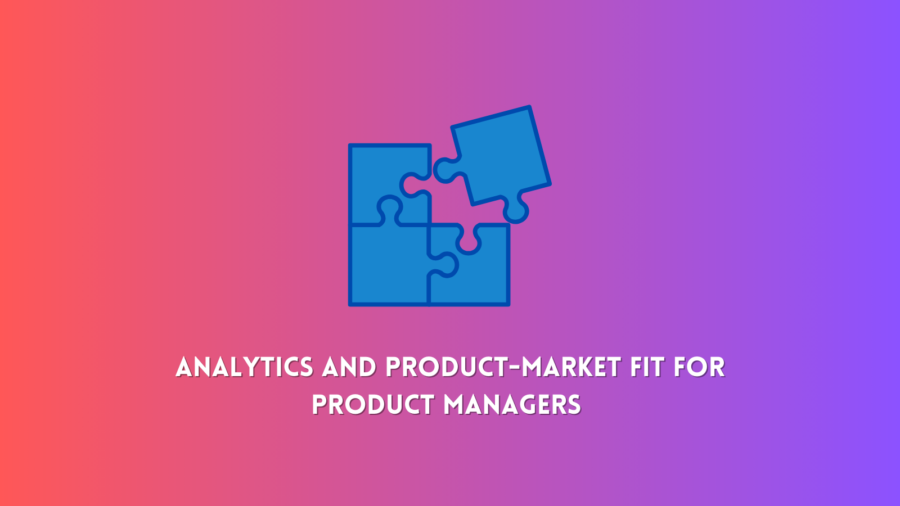Attaining the elusive product-market fit is a pivotal achievement. This pivotal juncture signifies the alignment between your product’s unique value proposition and the discernible needs of your intended audience. Navigating this intricate terrain mandates the judicious utilization of analytics – a powerful toolset that empowers you to glean valuable insights into user behaviors, iterate judiciously, and make well-informed decisions that resonate with your target market. This comprehensive guide will delve into the art of harnessing analytics to master the craft of achieving and sustaining product-market fit.
Step 1: Define Your Key Metrics
At the outset, embark on your journey by meticulously defining the cardinal metrics that hold the utmost significance for your product. These metrics are not merely numerical values but the compass guiding your strategic maneuvers. Picture this: if you’re steering a social media platform, metrics such as daily active users, time spent on the platform per session, and user engagement interactions could effortlessly metamorphose into vital barometers of product-market fit.
Step 2: Choose the Right Analytics Tools
In your arsenal of decision-making instruments, the selection of apt analytics tools assumes paramount importance. Goliaths like Google Analytics, the nimbleness of Mixpanel, Amplitude’s precision, and Heap’s meticulousness stand as paragons in this realm. A sagacious choice hinges on assessing the intricacies of your product and the depths of insights your journey necessitates.
Step 3: Implement Event Tracking
Immerse yourself in the realm of event tracking, an undertaking that empowers you to capture the mosaic of user actions within your product’s domain. Each event delineates a step in your users’ intricate dance, be it viewing products on an e-commerce platform, adding items to their digital cart, or embarking on the decisive checkout voyage. The events unfurl the narrative of your users’ journeys, laying bare the pattern that guides their interactions.
Step 4: Set Up Conversion Funnels
Visualize your user journey as a labyrinth; your role is to discern the precise moments where adventurers might deviate from the intended path. Like cartographers’ sketches, Conversion funnels chart this journey, affording you a panoramic view of user paths and the exact junctures where trekkers choose divergent trails. Suppose your dominion encompasses a software service – constructing a funnel that traces the voyage from sign-up to the triumphant completion of the onboarding process could unveil invaluable insights into your users’ navigation.
Step 5: Segment Your Users
The realization dawns that your users form an intricate tapestry woven from diverse threads. Like a masterful weaver’s artistry, segmentation segregates users based on myriad attributes – demographics, behaviors, and engagement levels. Picture a fitness app where casual users and zealous fitness devotees don distinct mantles. The patterns that emerge from this mosaic offer insights of unprecedented depth.
Step 6: Analyze User Behavior Patterns
Now, with the foundation firmly laid, embark on the exhilarating journey of decoding user behavior patterns. Traverse the vast expanse of data to uncover hidden gems – those aspects of your product that trigger heightened engagement, and those mysterious abysses where users’ footfalls falter. Picture your product’s landscape as a rich topographical map, each contour representing a facet of user engagement that guides your strategy.
Step 7: Gather Qualitative Insights
Numbers, though potent, rarely unveil the entirety of the narrative. Augment your arsenal with qualitative insights, the proverbial “why” behind the data’s cryptic verses. Enlist user surveys, engage in candid interviews, and stage meticulous usability tests. In a realm where a productivity tool’s engagement might falter, qualitative insights could unveil that a seemingly innocuous UI alteration inadvertently sabotages user efficacy.
Step 8: Iterate and Experiment
With insights gleaned and wisdom accrued, navigate into the domain of iteration – the iterative journey that propels your product toward its zenith. Conduct A/B tests, unleash variations, and evaluate outcomes with analytical precision. Think of this as your grand experiment, a symphony of calculated variations, each note designed to harmonize your product with your users’ deepest resonances.
Step 9: Monitor Long-Term Trends
Rest assured, the odyssey of achieving product-market fit is no sprint; it’s a marathon, a ceaseless endeavor. Monitor trends as they stretch and evolve over months and years. Imagine you curate a streaming service – observe how the timbre of user preferences orchestrates its symphony over time and refine your content gallery accordingly.
Step 10: Seek User Feedback Loop
Venture beyond the confines of numbers and immerse yourself in the human element. Forge an unwavering feedback loop with your users, allowing them to vocalize their thoughts, dreams, and vexations. Imagine embedding a portal, a digital realm where users unfurl their musings like treasured scrolls, guiding your product’s trajectory.
Step 11: Monitor Competitor Landscape
Yet, as the sage Sun Tzu proclaimed, “Know thy enemy.” Extend your gaze beyond the confines of your creation, and survey the landscape inhabited by your competitors. Scrutinize their moves, dissect their user engagement metrics, and dissect the fervent voices of their clientele. This panoramic view illuminates chasms in your own fortress and empowers you to weather the tempests of change.
Step 12: Align Analytics with Company Goals
As you wade through the currents of product management, remember the integral connection between your product and your company’s overarching goals. Visualize your product as a constellation in a broader galaxy, each star aligning with the grander cosmic dance. As your company seeks to extend its dominion into a nascent market segment, let analytics guide your overtures, unraveling the desires and idiosyncrasies of this novel audience.
In summation, the art of sculpting product-market fit entails a tango between creativity and data prowess. Product managers unearth the harmonies that resonate deep within their target market through the meticulous curation of metrics, the selection of potent analytics tools, the orchestration of user journeys, and the iterative ballet of experimentation. The realm of analytics is not a mere expanse of numbers; it’s the symphony sheet on which your users’ stories are composed and your product, the harmonious melody that binds them all.


